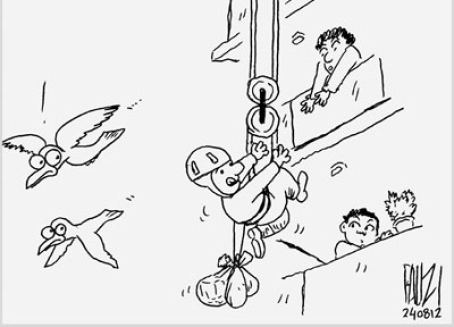Beware the bungalow in the sky
Professor Tan Sri Dato' Dzulkifli Abdul Razak
Learning Curve: Perspective
New Sunday Times - 26-08-2012
THE increasingly crowded airspace of Penang will soon house what is dubbed "bungalows in the sky".

They boast "a dual frontage of the promenade" sprawling over 0.9 hectares. Each unit of the 48- and 43-storied towers comes with "a dipping pool" and a host of other luxurious amenities.
The developer has claimed it is "the tallest residential development in Penang", where the once serene Gurney Drive stands.
Sunshine Supermarket used to be considered the only high-rise building there -- even then it was considered one too many!
Now it will be dwarfed by a project of a whopping "total development value of RM 1 billion".
Allegedly "about 40 per cent of the 106 units in the first tower have been sold".
Welcome to the "bungalows in the sky" for the rich and famous!
Critics of this kind of development are not new. They date back to my time as a student some four decades ago.
We were very possessive about Penang then, more so now as we see the island being pushed to the brink of ecological collapse.
Then we protested against the ambitious plan to build what was popularly known as the "Penang erection" in the middle of the city. It now remains an eyesore, more so if you climb up the tower and look down at its surrounding -- squalid living and working environment.
Friends, who are well versed in high-rise architecture, are quick to re-label such senseless "bungalows in the sky" as "tombs of the future". They reason that such a structure is inherently unsustainable as human quarters.
Recent talks about the impending "energy crunch" make such concerns valid. Indeed, questions are often raised about the sustainability of high-rise projects.
Some have noted the use of similar concepts such as "streets in the sky" which reportedly failed to recreate the sense of street activity and psychological security that low-rise neighbourhoods so easily exude.
High-rise construction is turning former poor-but-stable low-rise neighbourhoods into even poorer and anarchic sky-high holding pens.
The new high-rise that has replaced the slums has descended into an anarchy that had never plagued the original poor neighbourhood in the first place.
Studies in parts of Australia are already suggesting that buildings above three stories use more power, "much of it in common areas such as foyers and car parks".
Architecture Week (January 2012) says "it is likely that towers will continue to be more energy-hungry than lower-rise buildings because of intractable requirements to lift people and water over great heights".
In fact, professional groups and activists are now advocating a return to the development of urban areas without high-rise, and ones that are "composed of a building fabric that would rarely exceed seven stories" which are often seen in many European cities.
In such cities, the seven-storey building is the highest a person will typically walk up without having to resort to an elevator, with no overt negative impact on the local microclimate and character.
To be sure, the mushrooming of tall buildings do create a myriad of previously unknown challenges to human existence, not least socio-cultural problems that affect almost everyone in and around the high-rise. In other words, while we create "bungalows in the sky", we invariably also generate more ghettos.
And to know what the "tombs of the future" hold, it is interesting to read J G Ballard's 1975 novel High Rise, which was released again early this year.
It is a story of once-peaceful high-rise residents recreating a world ruled by the laws of the jungle driven by primal urges when faced with the harsh realities of a dysfunctional living environment.
- The writer is the vice-chancellor of Albukhary International University
